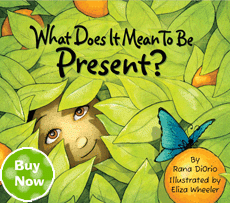Mindfulness
Positive Psychology of Mindfulness
Magic Minds and 3 M's of Mindfulness
Posted July 27, 2015
Thoughts are open for interpretation. Feelings are the interpreters. And, teachers are the translators of both thoughts and feelings.
For this reason, education is open to a new mindfulness. Educators are only beginning to explore and understand what it actually means to teach mindfulness in the classroom.
How do you teach students to be mindful in learning?
Distilled to its’ essence, mindfulness in learning is conscious and conscientious awareness of self, other, and subject. The core components of mindful learning are enmeshed with the three core components of learning; self-engagement, other cooperation, and subject mastery.
To learn, a student must be mindful of her personal purpose in learning: mindful of self. A student must be mindful of his social engagement in learning: mindful of other. A student must also be mindful of the content whether it is studying the newest NASA Pluto photos or the power of adjectives: mindful of substance.
Mindfulness is an attenuated awareness that is first focused on the self. How do I feel? What am I doing? What do I want to do?
Mindfulness then is focused on others. How do they feel? Why are they doing it? What do they want me to do?
Finally, mindfulness is focused on matter and, hopefully on the subject or aspects of it, that really matter.
When there is mindfulness, attention follows as form follows function. Where there is mindfulness, focus is the natural by-product. If there is mindfulness, there is the flow of learning effortlessly…fluently…fluidly.
The fluid and fluent thinking that flows from wellsprings of mindfulness are the current of a growth mindset and creative problem solving. If you want creative, problem-solving students with an intrinsic awareness of themselves and others - who flow into the learning fearlessly with focus - teach mindfulness.
There are three mindfulness strategies empirically proven to benefit students and that are easily adapted to the classroom at any age or level. These strategies constitute the 3 M’s of Mindfulness: Meditation, Mindset, and Meaning.
Meditation - The research on meditation as a means to mindfulness is impressive. Meditation is easy to implement in the classroom and there are rich and varied resources to help educators begin meditation programs. Watch the amazing video, Visitation Valley Quiet Time, and it will persuade you of the value of meditation in the classroom. Other meditation resources are provided below.
Mindset - The research on growth mindset - as the worthy child of mindfulness - is impressive. A future blog will examine in more detail how to assure an affirmative state of mind, or a growth mindset, in learning. For now, the basics of growth mindset - or how to change your mind with optimistic elegance - can be found on the Mindset Work/Brainology website.
Meaning - Mindfulness instills meaning in learning. Meaningful, or emotionally charged learning, begets deferred gratification and intrinsic motivation as a natural outcome. Meaning activates the power of self-management so educators can abandon extrinsic management and compliance models, and adopt conscious discipline approaches. Meaning saturates learning with motivation and mastery. Mindfulness activities, such as those that are a part of the outstanding Mind-UP program, are easily embedded in the classroom curriculum. Other mindfulness resources are provided below.
Mindfulness guides the student to harmonious and ever-present understandings that are important in, and to, the moment so the learning is momentous. Mindfulness is not only awareness that directs attention - it is precision attunement and alignment to self and other and purpose. Educators, who teach from a mindfulness perspective, will always be mindful of what is most important in the classroom and will teach their students the same.
Other Resources
NBC News Quiet Time Video Report http://www.nbcnews.com/nightly-news/san-francisco-schools-transformed-power-meditation-n276301
The Quiet Time Program http://www.davidlynchfoundation.org/pdf/Quiet-Time-Brochure.pdf
Edutopia Infographic on Meditation in Schools Across America http://www.edutopia.org/stw-student-stress-meditation-schools-infograph…
Edutopia Teach Mindfulness Invite Happiess http://www.edutopia.org/blog/teach-mindfulness-invite-happiness
Mindfulness for Teachers - Video lesson based on new book by fellow Norton Author, Patricia Jennings https://vimeo.com/119990821
Conscious Discipline http://consciousdiscipline.com
Center for Wellness and Achievement in Education http://www.cwae.org
Mindful Schools http://www.mindfulschools.org
Greater Good Science Center Tips for Teaching Mindfulness to Kids (Cowen, 2013). http://greatergood.berkeley.edu/article/item/tips_for_teaching_mindfulness_to_kids
PBS Mindfulness: A Teacher's Guide http://www.pbs.org/thebuddha/teachers-guide/
Positive Edge Academy in the UK is a start-up that I work with to bring web-based media lessons to students across the world. Mindfulness is a mechanism for positive psychology and a mindfulness module is the first dynamic curriculum hat Positive Edge will deliver. http://positiveedgeeducation.com
Wake Up Schools http://wakeupschools.org/wake-up/
Thanks to Eliza Wheeler for her artwork on this page. She illustrated the book, What Does It Mean to Be Present, by Rana DiOrio at Little Pickle Press. Little Pickle Press publishes meaningful books and media for children. Other meaningful and mindful children's literature is recommended by Pam on her blog the Mindful Classroom. Pam is trained in the Mindfulness School Curriculum and is another advocate of the Mind Up project.
As always, a special thank you to Jill H. Anderson of Ann Arbor, Michigan for granting me permission to use her charming artwork. I hope to feature more of her original drawings in future posts and to collaborate with her in other ways, too. Jill is a recently retired university-level science educator specializing in public outreach. She is also a maker of captivating drawings and dolls.
**********************************************************
READ MORE IN MY BOOK: Positive Psychology in the Elementary School Classroom (W.W. Norton & Company, 2013) is intended to help teachers build positive psychology classrooms consistent with affective neuroscience.
FOLLOW ME ON TWITTER https://twitter.com/pattyogrady
JOIN ME ON FACEBOOK https://www.facebook.com
FIND ME ON GOOGLE https://plus.google.com/+PattyOGrady/
THE POSITIVE PSYCHOLOGY CLASSROOM DAILY https://www.pattyogrady.com





